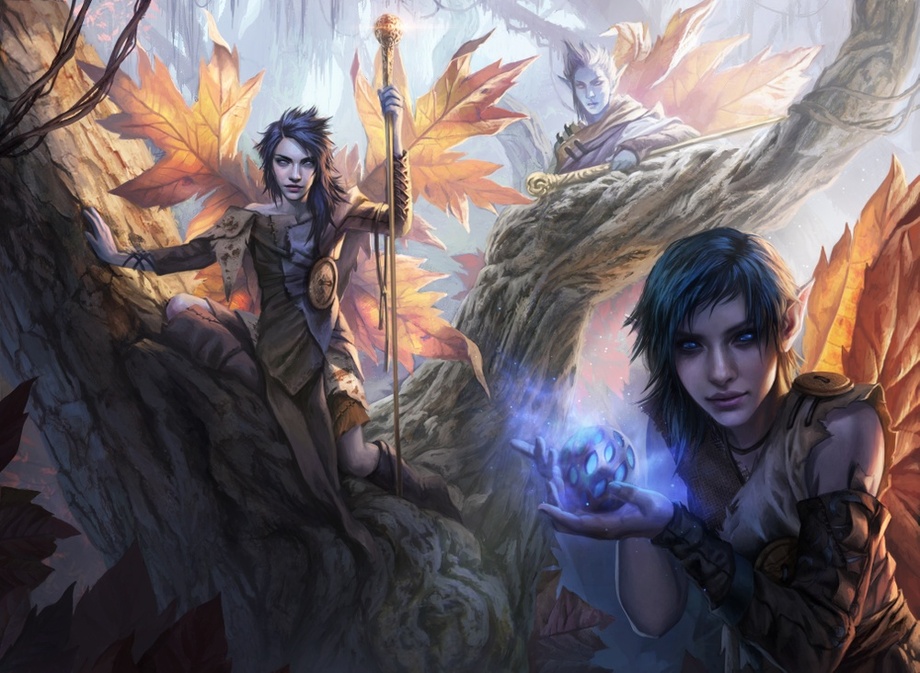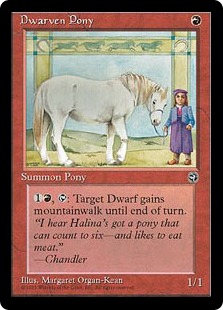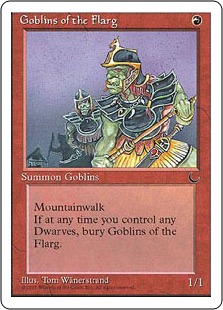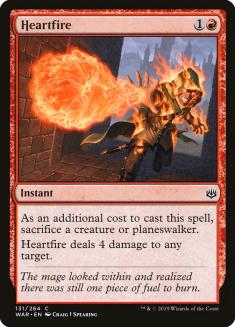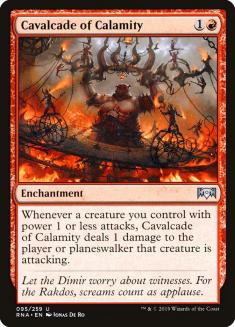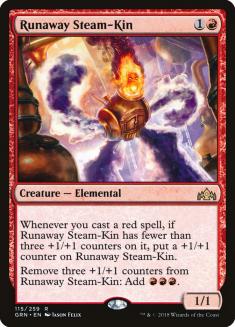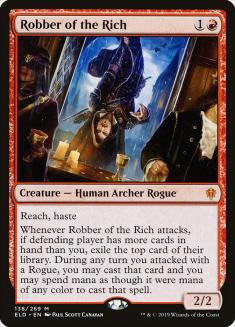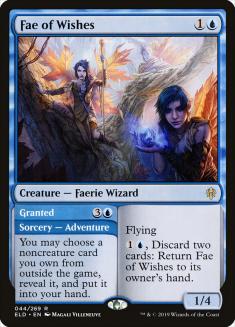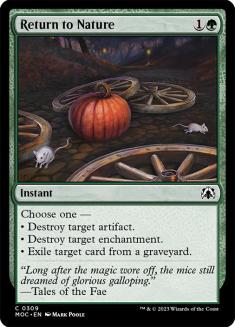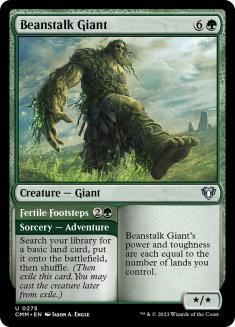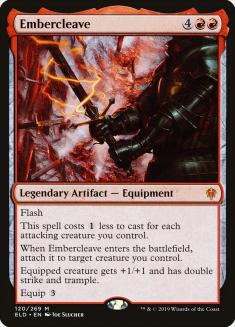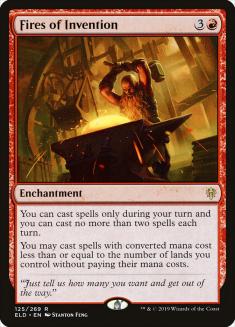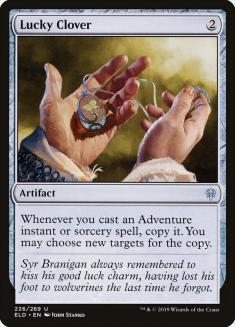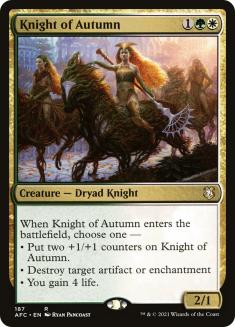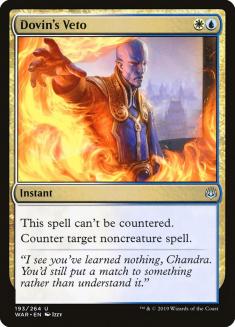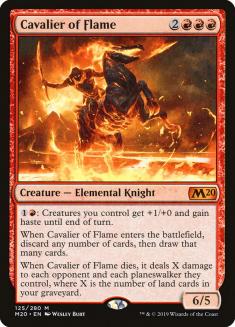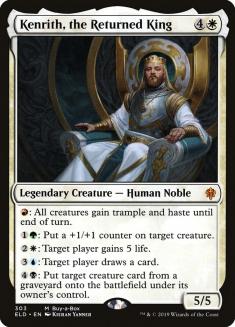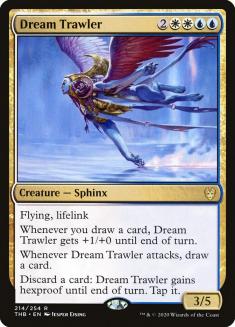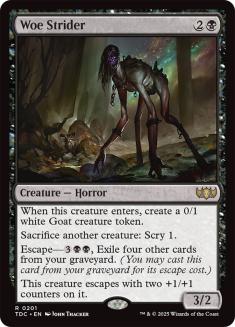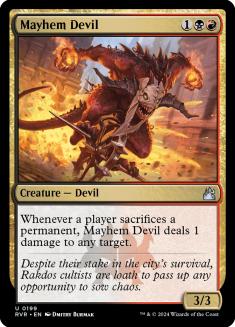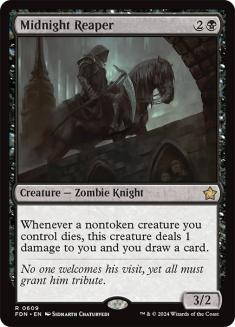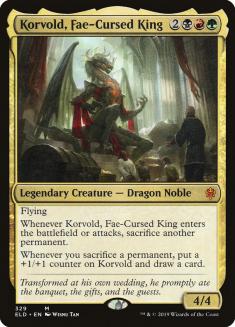Theros Beyond Death Standard was looking to be a solved format after World Championship XXVI, but DreamHack Anaheim cracked open the tight Azorius Control – Jeskai Fires – Mono-Red Aggro metagame. Now even more decks are popping up as top-tier contenders, with six unique archetypes in the Top 8 of Grand Prix Lyon and none of them Azorius Control or Jeskai Fires.
That also brings uncertainty. Having tested the format, I’m here to lay down some learned facts about several of the major archetypes.
Mono-Red Aggro – Reconsider The Basics
Bonecrusher Giant might be the best red card in Standard and it might not even belong in Mono-Red Aggro. As expected, let’s start with the scorching hot take and work our way back from there.
This kinda starts with Mono-Red Aggro just not being a successful strategy for either World Championship XXVI or DreamHack Anaheim. The stock Mono-Red Aggro deck does a couple of things pretty well: it casts Embercleave, and it casts Anax, Hardened in the Forge. If either of those doesn’t quite cut it, the deck can sometimes run someone out of the room with cheap threats, but that isn’t reliable with more two-drops than one-drops.
Back to Bonecrusher Giant, I think people are starting to think about what it is actually good against. You don’t want it against Temur Adventures, Jeskai Fires, Azorius Control, or the Simic piles. You aren’t burn-heavy enough to want Shock to the face, and a 4/3 for three gets instantly outsized by Uro, Titan of Nature’s Wrath and Lovestruck Beast.
Creatures (25)
- 1 Legion Warboss
- 4 Tin Street Dodger
- 4 Grim Initiate
- 4 Scorch Spitter
- 4 Fervent Champion
- 4 Torbran, Thane of Red Fell
- 4 Anax, Hardened in the Forge
Planeswalkers (4)
Lands (23)
Spells (8)
Sideboard

People have started trying stuff, and it kinda works. The core of the newer lists appears to be loading up on the less powerful one-drops, and then trying to find ways to leverage starting every game ahead.
Dwarven Pony and Goblins of the Flarg are having their last laugh 25 years after the original Sligh deck.
The two most successful routes to leveraging one-mana 1/1 bodies appear to be Heartfire and Cavalcade of Calamity. You accept your opponent will stop your random beaters with Lovestruck Beast or whatever, but you are still punching through damage on the first couple of hits on sheer volume. Without enough Lightning Strike equivalents, this is the burn we have to resort to so as to turn those chip shots into twenty damage.
These decks are also significantly better Light Up the Stage decks on both sides: more cheap threats to ensure it always costs one and more cheap threats so you don’t flip seven mana of cards on Turn 3 and get stuck.
The other upside? You are better-insulated against opposing Bonecrusher Giant. Spending two mana to kill Grim Initiate is not a profitable exchange even if it doesn’t cost a card.
A traditional Mono-Red Aggro deck won Grand Prix Lyon, but that doesn’t mean it’s the only option for the archetype.
Temur Adventures – Sideboard More
Creatures (24)
- 4 Lovestruck Beast
- 4 Beanstalk Giant
- 4 Edgewall Innkeeper
- 4 Bonecrusher Giant
- 4 Fae of Wishes
- 4 Brazen Borrower
Lands (27)
Spells (9)

After winning DreamHack Anaheim Aaron “littlebeep” Gertler put up a very informative reddit post about Temur Adventures. I didn’t read it until after I jammed a couple of matches, and found one thing notably different in how I instinctively approached the deck:
Times to bring in other cards: In aggressive matchups where I don’t expect to have time to Wish for cheap things, I’ll often bring them in to slightly improve my average card quality (this mostly means Lava Coil and Flame Sweep against aggro). I bring Expansion in against Reclamation because it has a bunch of targets and you rarely want to wish for Explosion. And… that’s about it, I think.
I was sideboarding a lot more and I was really happy with the results.
Granted is an expensive card. Your first selection is often fairly scripted to be the best answer for the one treat that doesn’t fold to Bonecrusher Giant or Brazen Borrower. If you’re diving into the sideboard twice with a bunch of mana because you had Lucky Clover and Fertile Footsteps, congrats, who cares, you win anyway.
Against Jeskai Fires, are you really winning a game where you have to Granted for Mystic Repeal and Return to Nature individually? Or would you rather just have the duo of Mystic Repeal and Disdainful Stroke to Granted for and Negate and Return to Nature in your deck so you have more mana-efficient interaction? The same applies in a ton of other spots: is Granted for Storm’s Wrath fast enough against Mono-Red Aggro or do you just want to draw the sweeper? I cast an Unsummon; are you really casting Granted for that or Domri’s Ambush in common but unique spots or should you just move one up?
Normally with a linear deck I would be adverse to sideboarding a couple of extra cards, but Temur Adventures is a loosely linear deck. Edgewall Innkeeper and Lucky Clover pay you back on your investment without a ton of triggers, and your Adventure creatures are just good cards without them. I was most commonly cutting the Giants from the deck: Bonecrusher Giant in the many cases your opponent won’t have good targets, and Beanstalk Giant against Mono-Red Aggro. Are you really winning a game where you have two Beanstalk Giants and a Lucky Clover if your opponent curves out with Scorch Spitter? You need the bonus interaction and to draw the other Adventures in your deck that interact with creatures.
Bant, Sultai, and Other Simic Piles – What Do You Think Your Deck Does?
I mean this in the most charitable way. Seriously.
Creatures (12)
Planeswalkers (10)
Lands (28)
Spells (10)
Sideboard

A lot of the Simic Soup lists have been losing the thread of what makes them good, and Ken Yukuhiro’s list still just hits all the right points.
You’re trying to compete with stupid Throne of Eldraine engines without really playing a stupid Throne of Eldraine engine. Uro, Titan of Nature’s Wrath is good, but it’s a seven-mana investment that pays back a couple of mana and makes a big threat eventually. It’s just not broken on the same level as that mess of a set.
You have reasonable sideboard cards, but as soon as you start getting fiddly with starting more interaction you are setting yourself up for failure. I think there’s a natural tendency to try to get interactive because all the effects say “stop some engine” and are fairly efficient, but what is your hand of Arboreal Grazer, two interaction, three lands, and a Hydroid Krasis really doing? And that’s the good scenario! You have room for about the three Shatter the Sky, and should select the highest-impact card for that slot. Maybe this week that means maindeck Aether Gust or something, but don’t start trimming threats to have coverage for everything or your deck will be a non-functional pile.
Creatures (11)
Planeswalkers (6)
Lands (28)
Spells (15)

If you want to start interacting, you have to redesign your whole deck. Mixing ramp and interaction as your routes to six mana just sets you up for bad hands full of air.
Jeskai Fires – Also Just Midrange
Jeskai Fires is a bit of a persistent relic in the format, unchanged from when it was battling against Oko, Thief of Crowns. It’s also not a very complicated deck: you cast the big thing for free, it gets haste, they die.
This comes more from the other side. While you probably have to stop Fires of Invention to keep them from winning, that isn’t always the case and it certainly isn’t the end of the line. Your opponent is still playing a deck full of mythic rare five-drop creatures that can be cast and attack, and a bunch of Aether Gusts and Knight of Autumns won’t quite stop that.
Whatever Giant creature (Elder or otherwise) your deck opts to play is going to be one of your most important cards. Almost always more stuff to handle their big things will be better to draw than the second card that interacts with Fires of Invention, since if they draw multiple Fires they are likely short on the threats to cast with them.
I listed creatures here as ways to handle their bulk for a reason. Reactive answers don’t play well against free Cavaliers, while the good proactive cards that hold off Cavaliers can often cover their Sphinx of Foresight backup plan on attacking power alone.
Maybe you knew this already from the late Throne of Eldraine days of Korvold, Fae-Cursed King fighting the “fake Standard card” battle against Kenrith, the Returned King, but it’s always good to have a reminder.
Azorius Control – Play All the Dream Trawlers
Creatures (2)
Planeswalkers (6)
Lands (25)
Spells (27)

I’ve read many times that our deck was specifically teched out for the World Championship XXVI metagame we expected, and that you shouldn’t just replicate it blindly “in the wild.” While this phenomenon happens from time to time, I don’t believe this is what happened here – I think our deck is just a good Standard deck for an open field.
While Paulo may have said this about his World Championship XXVI deck at the time, it certainly isn’t still the case.
When you’re playing against Jeskai Fires, Temur Reclamation, and the Azorius Control mirror, Dream Trawler is a risky option. These are all matchups where tapping out on Turn 6 can spell immediate defeat via some overwhelming response play.
But that wasn’t always the case, though, and the metagame is folding back on itself since DreamHack Anaheim. You have more Simic piles, more Temur Adventures, more Mono-Red Aggro, more decks that are going to struggle against a slammed Dream Trawler.
So play more Dream Trawler. The full four is a personal decision, but the first three are locked in if you want to win with Azorius Control these days.
Cat-Oven Decks – Three-Drops Aren’t the Important Part
Just like the Simic decks, there’s a ton of base-Rakdos decks with Cauldron Familiar and Witch’s Oven. If you want to sort the good lists from the bad, focus on which ones get stuck at the three-drops and which ones play games over and under that.
There are lots of three-drops that are good in a sacrifice strategy, but they aren’t game-breaking the way Lucky Clover or Fires of Invention is, with the exception of Mayhem Devil. There’s nothing wrong with playing some of these cards, but if you max out on three-drops you aren’t going to win. Starting a game on Turn 3 with cards that are just fine won’t beat the decks going over or under you.
So choose a lane. Either play enough good low-drops that your three-drops act as curve-cappers and you have good multi-spell Turn 4 and Turn 5s, or play something like Korvold, Fae-Cursed King or Kroxa, Titan of Death’s Hunger that matches the high-impact game-enders most decks are playing in games where your engine gets picked apart. Getting stuck in the middle on your decklist won’t get you anywhere in a real match.

